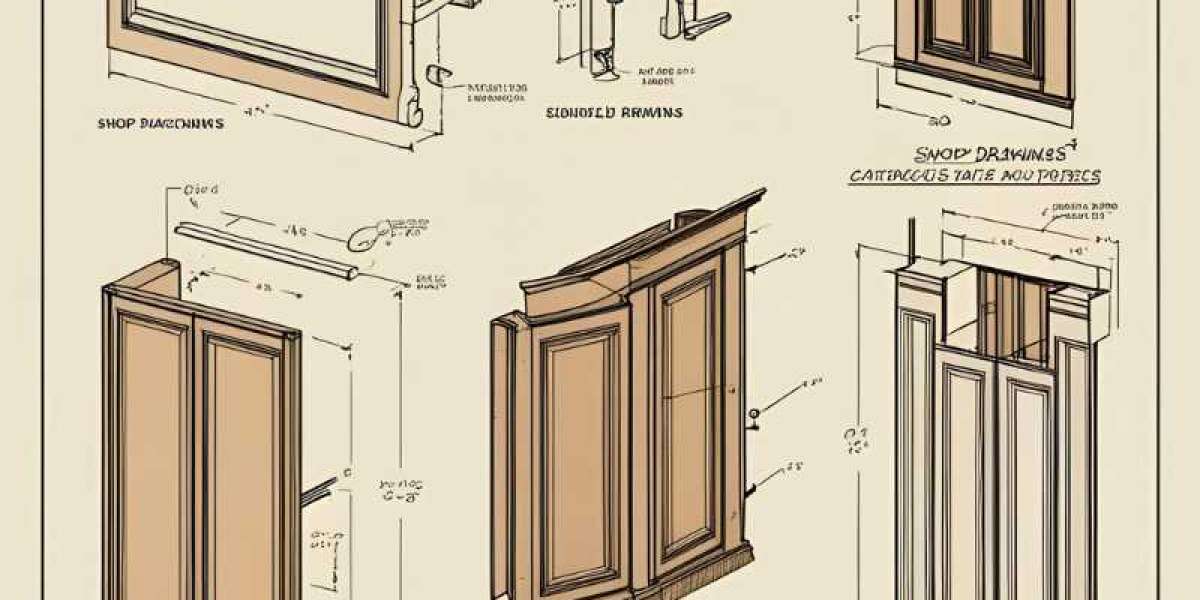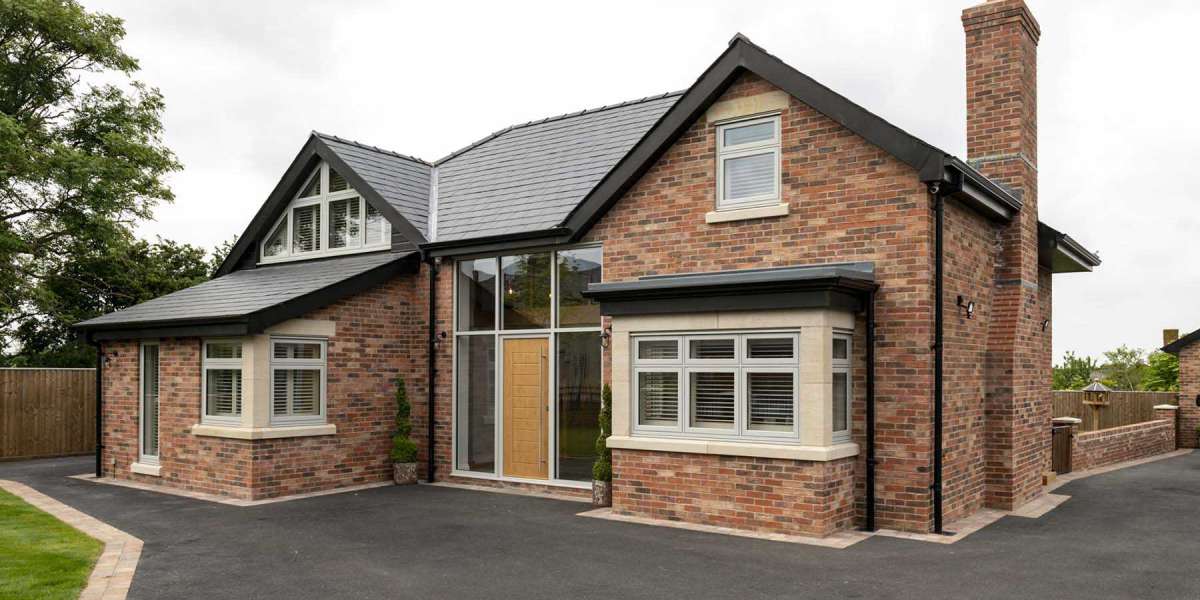In any interior design project, millwork elements such as custom cabinetry, paneling, moldings, and built-ins play a crucial role in defining both the aesthetic and functional aspects of a space.
These elements are often complex, highly customized, and closely tied to the overall design vision. Because of this, it is essential for interior designers to review millwork shop drawings at an early stage in the construction process.
Early review not only ensures that the design intent is accurately captured, but also helps identify potential conflicts, discrepancies, or missed details before fabrication begins. This proactive approach minimizes costly errors, streamlines communication among stakeholders, and keeps the project on schedule.
Understanding Millwork Shop Drawings
Millwork shop drawings are detailed plans used to build custom woodwork items like cabinets, shelves, doors, and trim. These drawings are very important in construction projects. They show exactly how a piece will look, what size it will be, what materials will be used, and how it will be made and installed.
Millwork shop drawings are created by drafters or designers. They take the architect’s or interior designer’s ideas and turn them into technical drawings. These drawings include measurements, materials, finishes, and sometimes 3D views. They help everyone involved the client, contractor, and woodworker — understand the final product before anything is built.
These drawings help avoid mistakes. For example, if a cabinet is too big for a space, the drawing will show the problem before the work starts. That saves time and money. The drawings also make sure the woodworker builds the piece exactly as planned.
Good shop drawings include several views of each item: front, side, top, and sometimes section views. They often include notes and instructions. These details help the woodworker know what tools and materials to use.
In short, millwork shop drawings are a key part of any custom woodwork project. They are the bridge between design and construction. Without them, it would be hard to make sure that the final product fits well, looks good, and meets the client’s needs. Understanding these drawings helps everyone work together more smoothly and successfully.
The Role of Interior Designers in the Millwork Process
Interior designers play an important role in the millwork process. Millwork refers to custom woodwork items like cabinets, doors, shelves, and moldings that are made in a workshop. These pieces help create the final look and feel of a space. Interior designers help make sure the millwork fits well with the design of the room.
At the start, interior designers talk with the client to understand their needs, style, and budget. They then work with millworkers to create detailed drawings or plans for custom pieces. These plans include the size, shape, color, and materials of the items. The designer makes sure the millwork matches the overall design of the space, whether it’s a home, office, or store.
Interior designers also help solve problems during the millwork process. They check that the materials chosen are strong, safe, and easy to maintain. They may also suggest changes to improve the look or function of the millwork.
Once the millwork is built and ready to be installed, interior designers often visit the site to make sure everything fits perfectly and looks right. They work closely with carpenters and builders to fix any last-minute issues.
In short, interior designers are key team members in the millwork process. They help bring the client’s vision to life, making sure the custom woodwork is both beautiful and useful. Their design knowledge ensures that every detail fits together smoothly in the final space.
Key Reasons for Early Review of Millwork Shop Drawings
Reviewing millwork shop drawings early in a project is very important. These drawings show the exact details of custom woodwork items like cabinets, doors, panels, and trim. Checking them early helps avoid many problems later.
First, early review helps catch mistakes. If something is wrong or doesn’t match the design plans, it can be fixed before the work begins. This saves time and money. It’s much easier to correct drawings than to fix something after it’s built.
Second, it helps with coordination. Millwork needs to fit well with other trades like electrical, plumbing, and HVAC. By reviewing the drawings early, you can make sure everything fits together. This avoids conflicts during installation.
Third, it ensures materials arrive on time. Custom woodwork takes time to make and deliver. Approving the drawings early gives enough time for ordering and production. This keeps the project on schedule.
Fourth, early review improves quality. Everyone has a chance to check the details and suggest better ideas. This helps create a final product that looks good and works well.
Lastly, it builds teamwork. When architects, contractors, and millworkers review drawings together early, they understand each other better. This leads to fewer misunderstandings and smoother work.
In short, reviewing millwork shop drawings early helps prevent errors, improves coordination, keeps the schedule on track, and leads to better quality and teamwork. It’s a smart step for a successful project.
Best Practices for Designers Reviewing Millwork Drawings
Reviewing millwork drawings is a key part of a designer’s job, especially for custom furniture, cabinetry, or interior details. These drawings show how items will be built, so it’s important to check them carefully. Here are some best practices to follow:
- Understand the Scope:
Before reviewing, make sure you understand what the project includes. Review the design intent, finishes, and layout. This helps you know what to expect from the millwork drawings. - Check Dimensions:
Always check that all measurements are correct. Look for the height, width, and depth of each item. Compare them to your original plans to ensure nothing has changed. - Review Materials and Finishes:
Make sure that the right materials and finishes are listed. Double-check for consistency with your design and client selections. - Look at Details:
Study the detailed sections, joints, and edges. Make sure the construction methods match your design goals and look good. - Confirm Functionality:
Openings, drawers, doors, and shelves must work as expected. Check clearances and space around each piece. - Coordinate with Other Trades:
Make sure the millwork drawings don’t clash with plumbing, electrical, or HVAC. Coordination avoids costly mistakes during installation. - Mark Up and Give Feedback:
If you find issues, clearly mark up the drawings and share feedback with the millworker. Be specific and clear. - Ask Questions:
If something is unclear, ask questions. It’s better to solve problems early than fix them later.
By following these simple steps, designers can help ensure that millwork is built exactly as planned.
The End Note
Reviewing tools millwork shop drawings early is a vital responsibility for interior designers and a key factor in ensuring the success of any interior design project. These drawings serve as the detailed blueprint for custom woodwork and must align precisely with the overall design vision.
By conducting an early and thorough review, designers can catch errors, ensure proper coordination with other trades, and confirm that materials and finishes match the project requirements.
This proactive approach not only improves the quality of the final product but also saves time, reduces costs, and fosters better collaboration among team members.
Ultimately, early engagement in the millwork process allows interior designers to protect the integrity of their designs and deliver a cohesive, functional, and visually stunning space.








